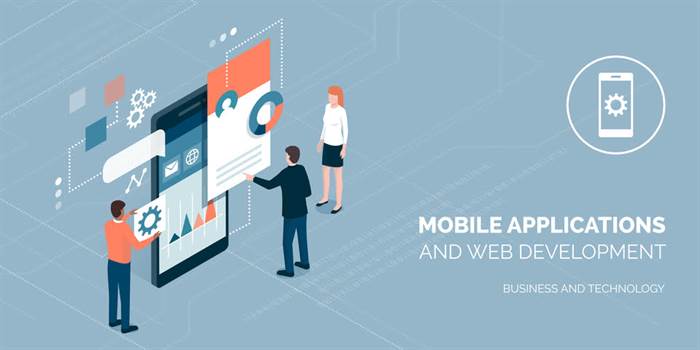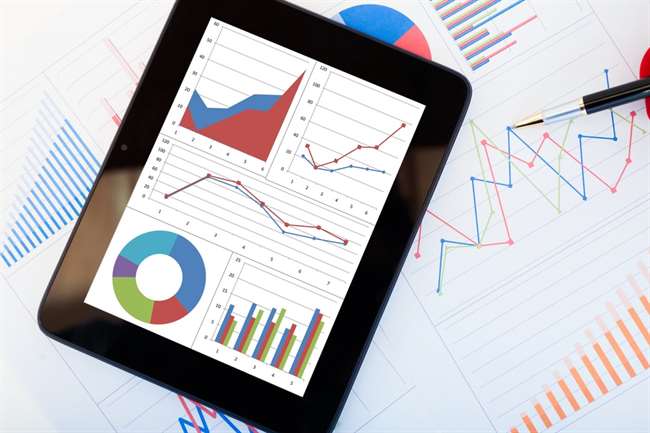It is an in depth course of that creates a comprehensive define for the engineers’ workflow. They use the SDLC alongside the engineering manager to prepare their workflow. However, the SDLC is also part of the holistic product improvement framework. Once in movement, it’s best to remain versatile and modify the methodology with growing clarity on the operation’s success. Understanding the panorama of current and upcoming technologies becomes the necessary thing deciding issue when evaluating the overall efficacy or cost-effectiveness of software program growth.

For example, during the first iteration, the team has determined to work on three features out of 10. While creating them, developers pass all levels of the software development process, starting from the requirement gathering to the deployment and upkeep. When they transfer to the subsequent set of capabilities, the event cycle starts over. So, the Iterative SDLC mannequin doesn’t require an entire record of requirements before the project starts. The improvement course of might begin with the necessities to the useful part, which can be expanded later. The course of is repetitive, allowing to make new versions of the product for every cycle.
Software Deployment
Probe deeply to find errors that can decelerate the discharge of your last product. In this section you get to earn the belief of your stakeholders by embodying a builder’s mindset. How users would work together with the product was still very a lot unknown.
Every hardware or software system will undergo a growth course of which could be thought as an iterative course of with multiple steps. SDLC is used to provide a rigid construction and framework to define the phases and steps involved within the improvement of a system. At Intellectsoft, we know how essential an effective project administration technique is. Our builders and specialists have a track record of constructing revolutionary software program solutions that perfectly match our clients’ business objectives and requirements. The Iterative model incorporates a sequence of smaller “waterfalls,” where manageable portions of code are fastidiously analyzed, tested, and delivered through repeating development cycles.
Its primary ideas are сourage, dedication, focus, openness, respect. While programmers repair bugs and add new features, a DevOps specialist plans, and schedules the continuing launch. After the developers’ work is done, DevOps releases a new version to an app distribution platform or the server if we’re speaking about the web apps. DevOps engineers use numerous tools to attain quicker product deployment — for example, Jenkins, Docker, Git, and others. Requirement analysis must be approached seriously by the specialists as a result of it’s a basis of all additional work. The SDLC models define how the method is organized, by which order the potential dangers are eradicated, and the issues are solved.
What Is The Software Improvement Lifecycle (sdlc)?
Failure to take into account the needs of consumers and all customers and stakeholders may end up in a poor understanding of the system necessities at the outset. The advantages of SDLC only exist if the plan is followed faithfully. An extension of the waterfall mannequin, this SDLC methodology tests at each stage of improvement. It’s additionally necessary to know that there is a robust concentrate on the testing section. As the SDLC is a repetitive methodology, you want to guarantee code quality at each cycle. Many organizations tend to spend few efforts on testing whereas a stronger give consideration to testing can save them lots of rework, time, and money.

Spiral mannequin is a mixture of the Iterative and Waterfall SDLC fashions with a major accent on the risk analysis. The primary issue of the spiral mannequin is defining the best second to take a step into the subsequent stage. The preliminary set timeframes are beneficial as the solution to this problem. The shift to the next stage is completed according to the plan, even if the work on the previous step isn’t accomplished yet. The plan is introduced based mostly on the statistical knowledge received within the last initiatives and even from the private developer’s experience.
Levels Of Sdlc And Greatest Practices And Methodologies
The vary of statuses in Kanban is much less in depth, however it’s adequate to maintain up with the software improvement process. The key differences lie in the work approach and primary rules of the tactic. If one thing vital changes in the initial plan, a staff ought to wait till the final stage to return to the start and cross all software life cycle phases once more. When this system is finalized and has no critical issues, it’s time to launch it for the end-users. After the initial program model release, the tech assist team joins.
- The V-model is a subset of the Waterfall model for SDLC that focuses on guaranteeing the quality of the ultimate product by way of rigorous testing.
- To manage and management a substantial SDLC initiative, a work breakdown structure (WBS) captures and schedules the work.
- If you’re on the lookout for a dependable software development company to show your idea into a top-quality software product, contact our group at present.
- The SDLC process is like a jigsaw puzzle; it can’t be finished until all of the pieces are in their right locations.
- It then creates the software program via the phases of research, planning, design, growth, testing, and deployment.
Of all SDLC approaches, the waterfall mannequin has been across the longest. The improvement process is linear and uniform, with each stage being completed before happening to the next. Users could discover errors and defects within the system that were not found throughout testing. These could even want to start the software program growth course of again from scratch. Extreme programming incorporates methods concentrating on particularly the technical aspect of the software growth course of. They embody steady integration, pair programming, test-driven growth, etc.
“Let’s get this closer to what we would like.” The plan nearly never seems good when it meets actuality. Further, as situations in the actual world change, we want to update and advance the software to match. In different words, the team ought to determine the feasibility of the project and the way they’ll implement the project efficiently with the bottom risk in mind. ” This stage of the SDLC means getting enter from all stakeholders, together with clients, salespeople, business consultants, and programmers. Learn the strengths and weaknesses of the current system with enchancment because the objective. Feature parity occurs when the features between two variations of a product stay balanced so that the shopper experience isn’t impacted.
Part #3: Architectural/software Design
Rapid improvement cycles help groups establish and address points in advanced projects early on and before they turn into vital issues. They can also engage prospects and stakeholders to obtain suggestions all through the project lifecycle. However, overreliance on customer feedback could lead to extreme scope modifications or end the project halfway. Security is a vital side of any software program improvement course of. However, in contrast to conventional software program improvement that addresses safety as a separate stage, SDLC addresses security each step of the best way through DevSecOps practices. At this stage, the aim is to deploy the software to the manufacturing surroundings so users can begin using the product.

In addition, it’s usually project or supply managers who’re in command of choosing the right approach. Their knowledge of the peculiarities of each methodology noticeably facilitates the task. What is software development life cycle, and why does this notion appear so challenging and sophisticated at first? SDLC is a continuous process system development life cycle (sdlc), which starts when a choice to launch the project is made and ends in the meanwhile of its full removal from the exploitation. They are divided into groups in accordance with some components, and every strategy has its strengths and weaknesses. SDLC can additionally be an abbreviation for Synchronous Data Link Control and software program growth life cycle.
This evaluation helps project managers construct a picture of the long-term assets required to develop an answer, potential market uptake, and which obstacles may come up. The spiral model combines the iterative model’s small repeated cycles with the waterfall mannequin’s linear sequential flow to prioritize risk evaluation. You can use the spiral model to make sure software program’s gradual launch and improvement by constructing prototypes at each phase. A software improvement lifecycle (SDLC) mannequin conceptually presents SDLC in an organized style to help organizations implement it. Different models prepare the SDLC phases in varying chronological order to optimize the development cycle.
The project supervisor is answerable for executing and closing all of the linear steps of planning, building, and sustaining the new or improved system all through the process. SDLC represents a giant number of complex models used in software improvement. On a practical degree, SDLC is a common methodology that covers totally different step-by-step processes wanted to create a high-quality software program product. Application lifecycle administration (ALM) is the creation and maintenance of software purposes until they’re now not required. The software improvement lifecycle addresses solely the development and testing of software parts. On the opposite hand, system development is a broader superset involving the setup and management of the software program, hardware, folks, and processes that may make up a system.

To create a product that meets the needs of its target market, this model creates the time, power, and materials wanted to do so. However, there could be at all times a chance that the final outcome shall be unsatisfactory. The next step is for quality analysts to verify the program for flaws and defects. Then, they should compare the features to the demands of the product’s audience. Now that prototyping technologies have advanced to include AI and automation parts, this phase may be completed rather more rapidly. They might help you rapidly produce several low-fidelity, early-stage prototypes for testing.
They continuously evaluate requirements, plans, and results so that they can reply quickly to change. The agile mannequin is each iterative and incremental, making it extra environment friendly than other process fashions. The improvement staff combines automation and manual testing to check the software program for bugs. Quality analysis includes testing the software program for errors and checking if it meets customer necessities. Because many teams immediately test the code they write, the testing section typically runs parallel to the event phase. Each SDLC model presents a singular course of in your team’s various project challenges.
It can embody duties like organizational coaching and alter management insurance policies that don’t fall under the software growth umbrella. The planning part usually contains tasks like cost-benefit analysis, scheduling, useful resource estimation, and allocation. The improvement staff collects requirements from several stakeholders corresponding to prospects, inside and external specialists, and managers to create a software requirement specification doc. SDLC works by decreasing the value of software improvement while concurrently enhancing quality and shortening production time.
The greatest drawback of this mannequin is that small details left incomplete can hold up the whole process. Application efficiency monitoring (APM) tools can be used in a growth, QA, and manufacturing environment. This retains everyone using the identical toolset throughout the complete improvement lifecycle. The selection usually is determined by the particular methodology being followed and how granularly a staff or a project manager likes to interrupt down the steps. The number of phases or stages within the Software Development Life Cycle (SDLC) can range based mostly on completely different methodologies and how granularly the steps are damaged down. DevOps is an approach to SDLC that combines improvement (dev) and operations (ops) to hurry the delivery of high quality software.
This part concentrates on speaking with the users/end users to gather the necessities and to capture info relating to a user’s needs. The product manager, at this stage, defines and paperwork the scope of the project in a doc known as a enterprise case. There are seven main phases in a complete SDLC, including planning, evaluation, maintenance, and others. It is possible to skip, divide, or combine several steps based on the specifics of the project, the staff, the supervisor, and so on.



